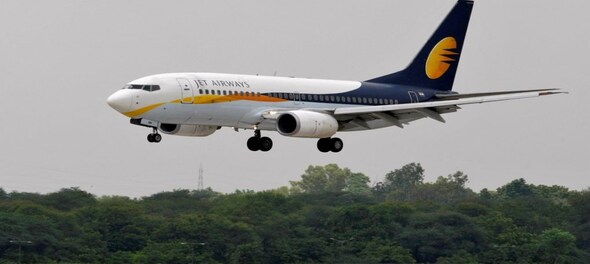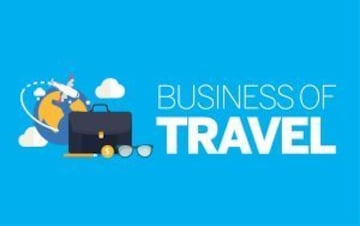
Air travel, for all its innovation on cabin experiences and new aircraft, still struggles with finding new distribution channels for selling its inventory, which are the seats in the aircraft. A global business by nature, air travel distribution is built on the back of Global Distribution Systems (GDS), those clunky terminals you would have seen back in the day when you headed to your travel agent to purchase a ticket.
 A GDS, as it is called for short, is a network of computers that connects the travel agent to the airline reservations system in real time. The GDS systems were first launched back in the early 60’s, when Sabre, then owned by American Airlines and Apollo, owned by United, found their way into travel agencies.
A GDS, as it is called for short, is a network of computers that connects the travel agent to the airline reservations system in real time. The GDS systems were first launched back in the early 60’s, when Sabre, then owned by American Airlines and Apollo, owned by United, found their way into travel agencies.Amadeus, which now has the biggest market share, was founded in 1987 by Air France, Iberia, Lufthansa and SAS, all of them are European airlines. For much of the time since then, the GDSs ruled the way ticketing was done, till the time the internet came around.
And while ticket distribution and sales have now become more graphic oriented with the advent of the online travel agents, the pipes on which the ticket sales ride are still the same, with GDSs more or less performing the same functions as in the 60’s. Essentially, like fibres and satellites are the pipes of the internet, GDS are the pipes of the air travel industry.
But why do you need them? Simply said, to distribute. For instance, let’s say, you need to fly to far-flung New Zealand from India. There is no Indian airline that directly flies to New Zealand, so you need a ticket which is intertwined between many airlines.
For instance, let’s say, a Bhopal-Delhi-Singapore on Air India, which then hands over to Singapore Airlines to fly you to Sydney and from there Air NewZealand to your end destination. But since it is all on the same ticket, Singapore Airlines has information about the fact that you would come from Air India and it needs to wait for you.
These pipes charge every time you book a ticket, many times on a per segment basis. Which means if you go Mumbai-Amsterdam-New York-Boston, the airline has paid four times to the GDS even before you set foot on the plane. But that is how the legacy airline business has been run, and GDS’s are essential to book tickets across airlines, where you may have booked half your travel on, let’s say Air India, and the rest on their Star Alliance partner airlines which may take you to their eventual destination.
Not to say that no innovation took place in the industry. When no-frills airlines hit the market, with their new approach, they launched as a point to point carriers, which meant they did not want to do business networking with other airlines. So, they did not want to pay a per segment fee, sometimes many dollars, to external GDS systems, and hence invested in new age booking systems where they directly sold to travel agents and customers.
The cost of distribution via the GDS, as compared to the low-cost model, could be up to five times higher. So, on a similarly priced fare, let’s say a Rs 2,000 ticket, airlines using the GDS are already paying Rs 400 even before the customer arrives at the airport.
As Jet Airways tries to become a more efficient player, trying to cut costs and compete with the no-frills carriers which are over 60 percent of the Indian domestic market, one of the areas where they are going to focus on is the ticketing sales.
The airline has been working on a massive project to make the airline’s cost of sales cheaper. India, for all its IT savvy, still buys about 85 percent of their tickets from travel agents, including OTAs, corporate travel agents and retail agents.
So, any solution that Jet Airways would have to create would still have to ride on the GDS platform. India, after all, continues to depend on intermediaries. Even in the US, after investing 100s of millions of dollars, the airlines have managed to get 50 percent of direct sales.
Jet Airways did not consider selling the low-fare inventory directly, and only selling the more expensive tickets via the travel agents, given, apparently, the travel agents have also been after the low fare inventory for their customers.
So, 9W still wanted to still stay on the GDS systems, without raising prices for customers. Unlike India where the costs of the GDS are absorbed by the airline, some European carriers charge 15 euros or more over and above their tickets as additional GDS surcharge. If Jet was to add those charges to their tickets, they would lose the competitive nature of their ticket prices.
In the end, Jet Airways decided that they could only work with GDSs which would be able to help them cut the cost of distribution. They also figured that a single-GDS strategy, such as that which Air India is pursuing, would be too risky by reducing the distribution options to unacceptable levels. So, they went ahead and signed up new multi-year contracts with Sabre as well Travelport. These are number two and number three globally, in terms of market share.
All that this decision meant was, that Jet Airways is cutting away from sharing their inventory on the Amadeus platform. Come April 1, 2019, and travel agents who use Amadeus for ticketing won’t have access to the Jet Airways inventory at all.
The organised players, as well as the OTAs, have for the longest time used multiple GDS terminals, it should not be trouble to ask them to use another terminal for the same requirements. But both Sabre and Travelport have been going door to door to all the travel agents as well, trying to get them up and running on their platforms, so that come April 1, they still would have access to Jet Airways inventory.
But what does this mean over the long run for agents? Jet Airways is already working on enhancing its branded fares to offer a much wider array of choices to its guests not only on the direct channels, but also leveraging the “rich content” capability of Travelport and Sabre.
For me, I just hope at the moment that my reservations on Jet Airways made via travel agents would work out correctly and without any trouble. The airline says there is nothing to worry about and no action needed for the tickets already booked, and I’ll take their word on that.
Ajay Awtaney is a business travel and aviation journalist based in Mumbai, and the founder of the Indian frequent-traveller website Live From A Lounge. Ajay flies over 200,000 miles every year, and tweets about The Business of Travel at @LiveFromALounge.
First Published: Mar 15, 2019 5:55 AM IST
Check out our in-depth Market Coverage, Business News & get real-time Stock Market Updates on CNBC-TV18. Also, Watch our channels CNBC-TV18, CNBC Awaaz and CNBC Bajar Live on-the-go!


2024 Lok Sabha Elections | What does a low voter turnout indicate for NDA and I.N.D.I.A Bloc
Apr 29, 2024 5:48 AM
'Borrowed' leaders: Congress hits out at AAP for not fielding their own candidates in Punjab
Apr 28, 2024 9:53 PM
EC asks AAP to modify election campaign song and Kejriwal's party is miffed
Apr 28, 2024 9:25 PM

